

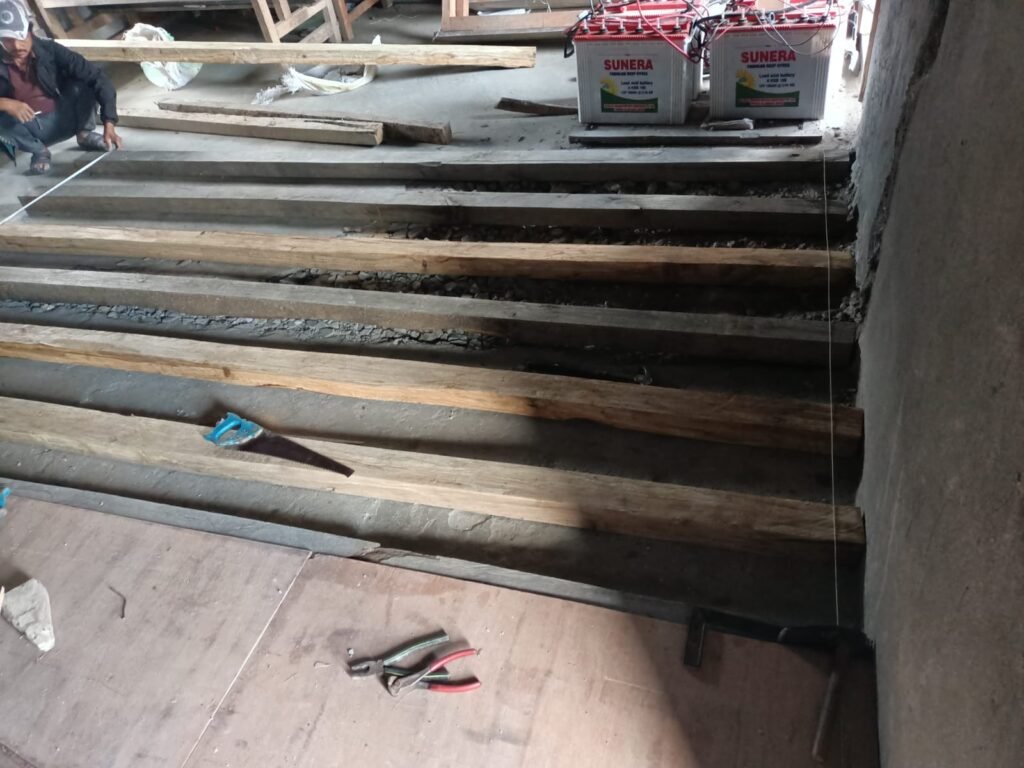
This image documents a key phase of an ongoing construction project, focused on improving school infrastructure. It shows a worker carefully measuring and aligning wooden beams, which appear to be part of a new raised floor or platform installation. Tools like a handsaw, pliers, and measuring tape are visible, indicating hands-on craftsmanship and precision work.
In the background, there are large Sunera-brand solar batteries, suggesting the integration of renewable energy solutions — potentially for providing electricity or powering educational equipment in the school.
This project emphasizes:
Upgrading and strengthening school buildings with durable materials.
Preparing foundational wooden flooring or platforms for classroom use.
Incorporating solar power to ensure sustainable, off-grid electricity access.
Local labor and skilled craftsmanship supporting community employment.
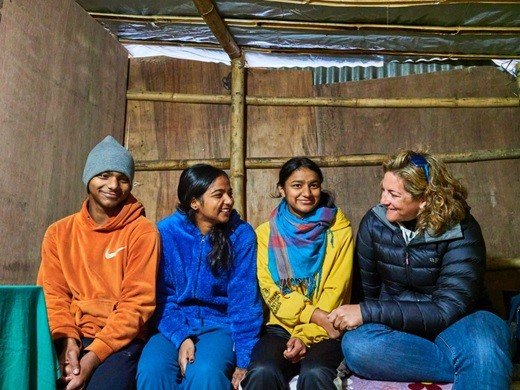

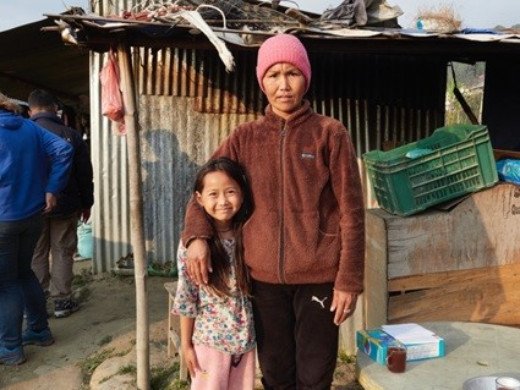
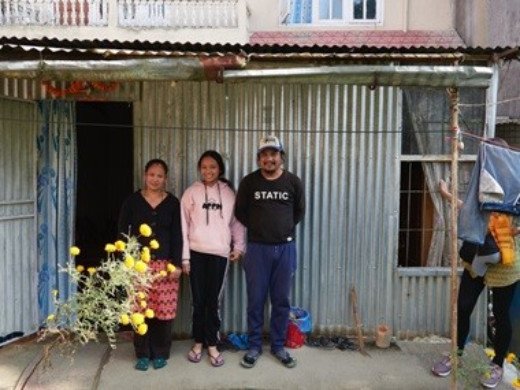
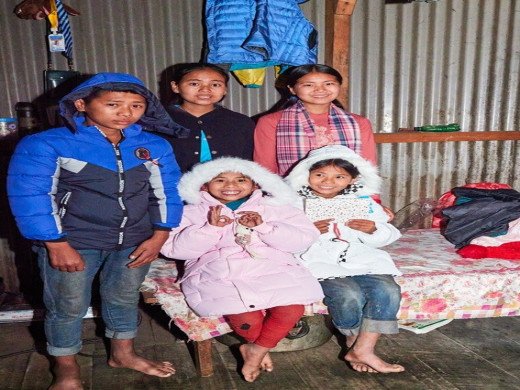

SoS Himalaya Nepal, Kathmandu, since its establishment, has been operating an educational scholarship program under quality education for children from poor, helpless, orphaned, and marginalized families. By the fiscal year 2081/82 B.S., the organization successfully supported 77 students enrolled in various educational institutions across different parts of the country under formal education.
Among them, 3 students graduated up to the bachelor level, while 2 students were exited from the program after receiving skill-based training due to age limits and average performance in school education. These students are kept under the kinship care, and the organization manages their school fees, accommodation, clothing, medical care, and stationery.
We would like to inform you that new students are added to this project every year as part of its ongoing implementation.
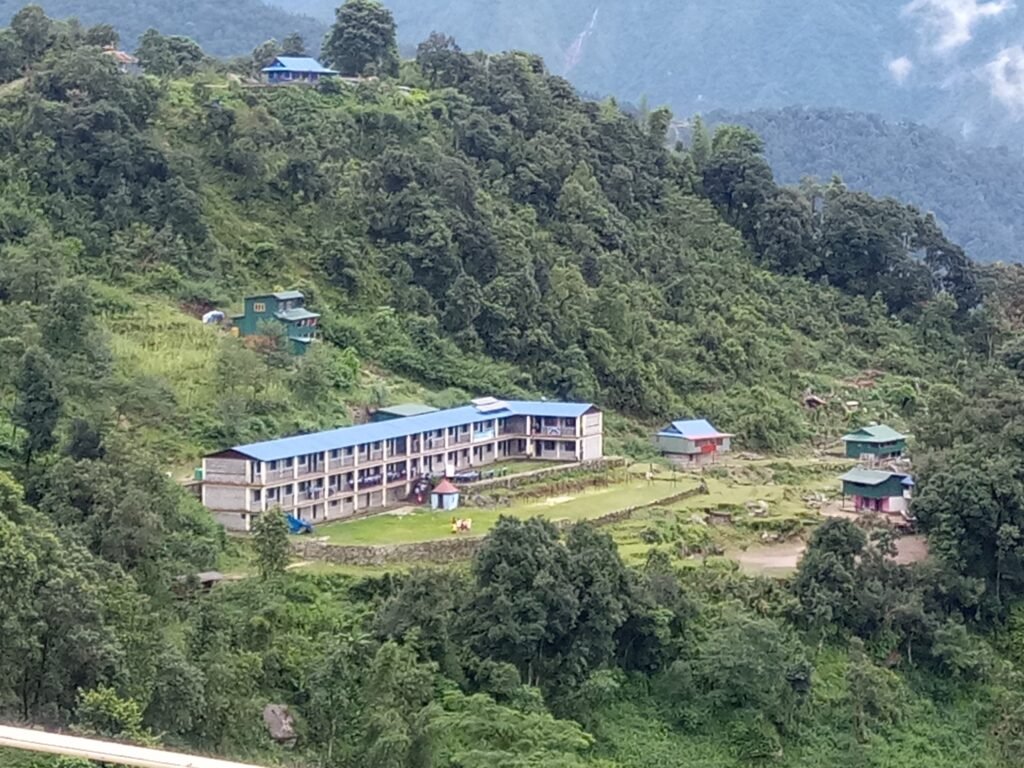
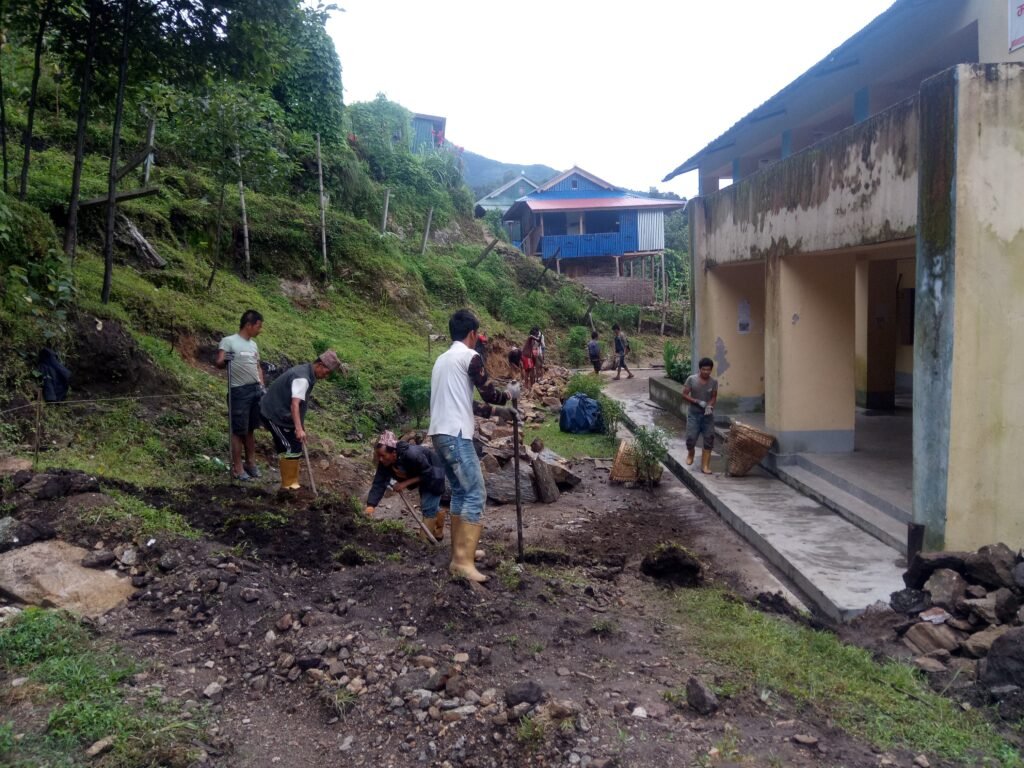
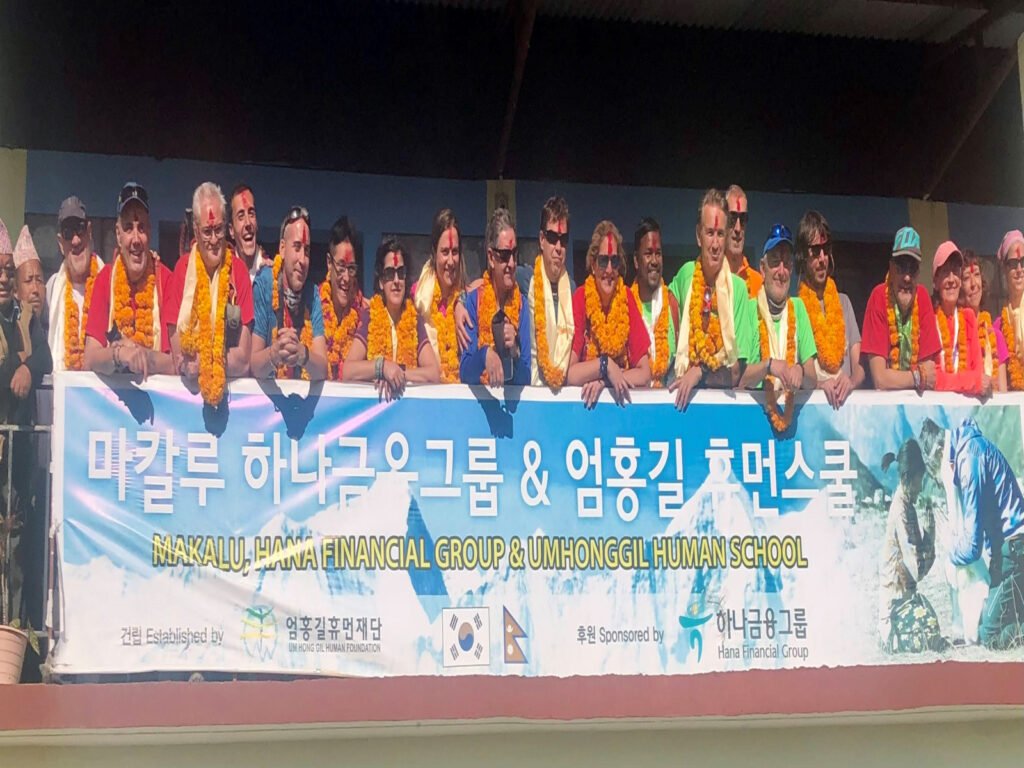

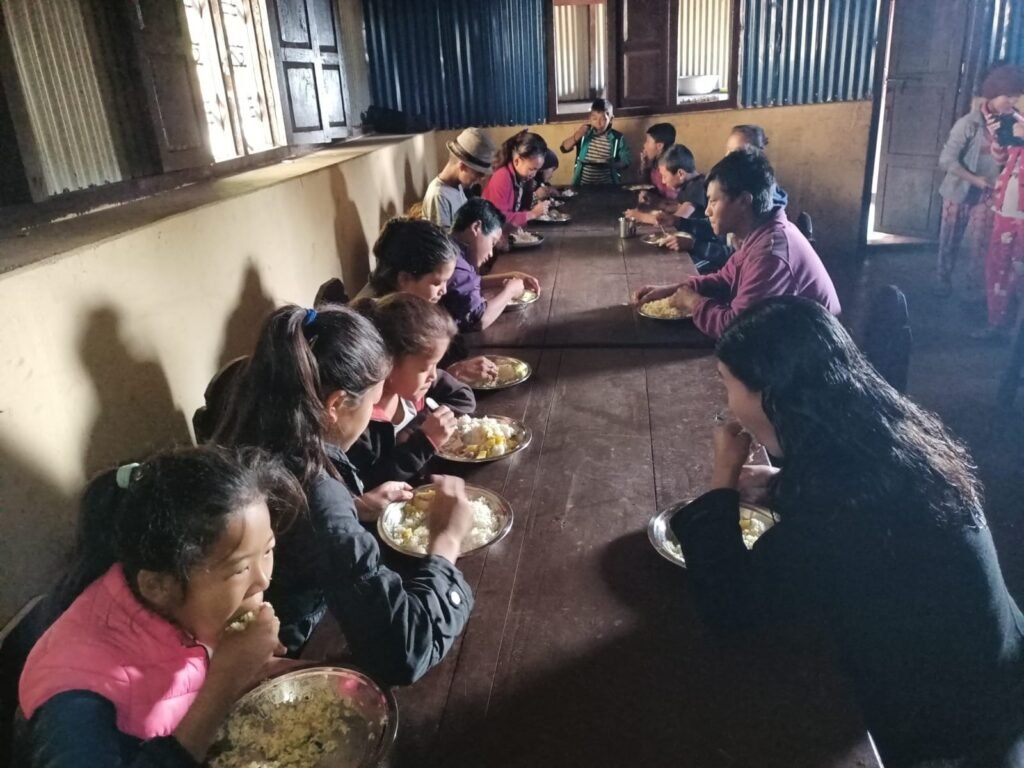

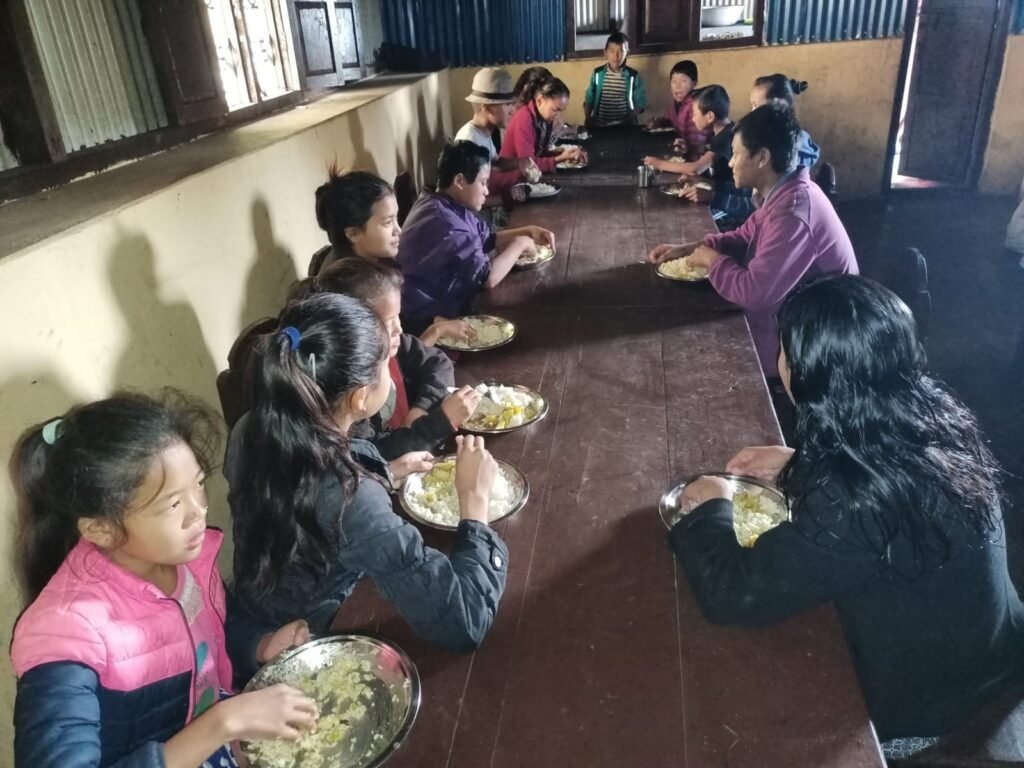
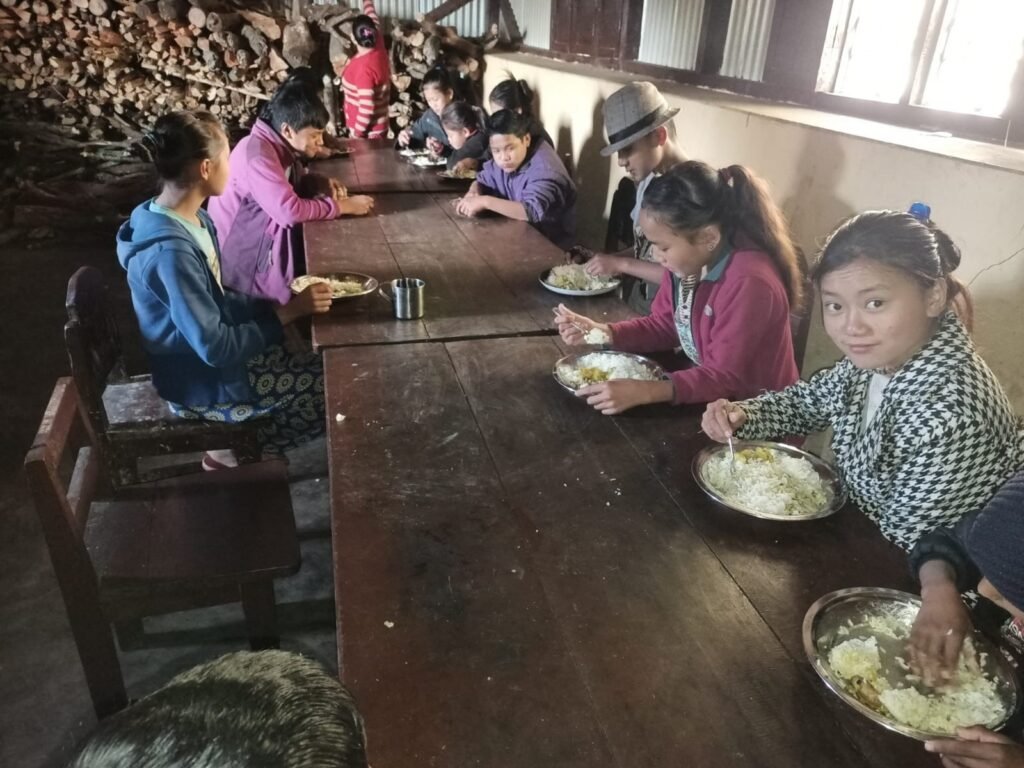
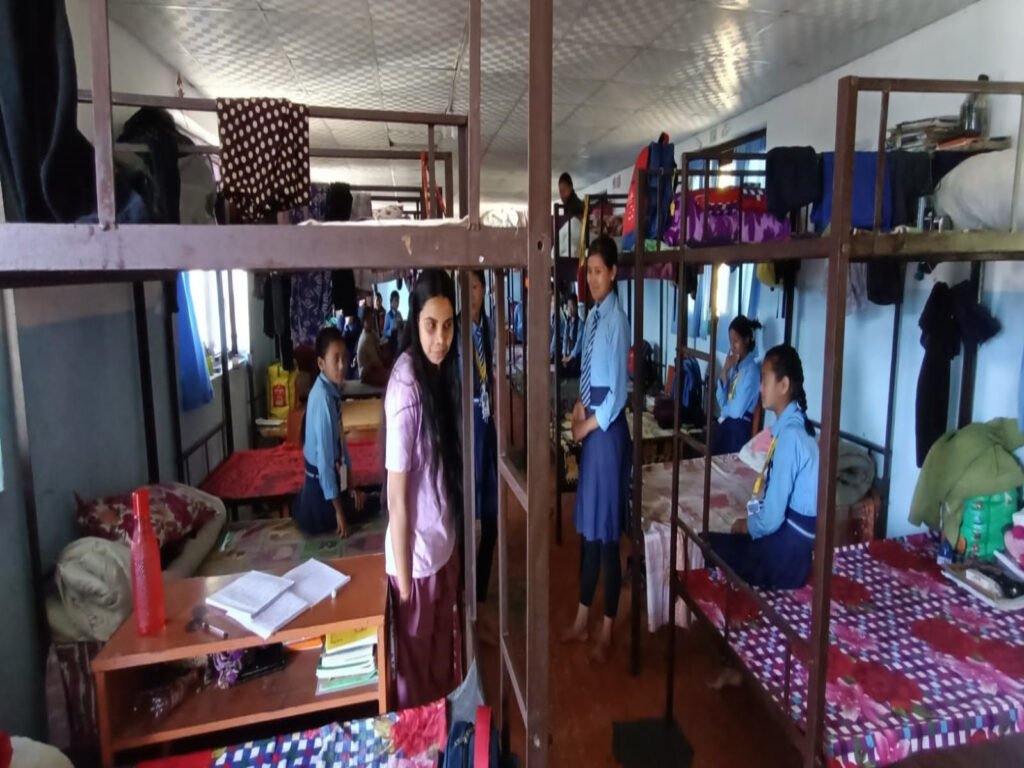

The organization has been providing free foods, stationery, and physical resources for hostel management to 50 students from poor families residing in the hostel operated by Shree Hemadri Secondary School located in Makalu–2, Seduwa, Sankhuwasabha, which was established considering students coming from remote villages for their studies.
Students from remote villages, who need to spend three hours to reach and three hours to return daily, have been included in this program. Among the students, there are 30 girls and 20 boys, with the program emphasizing safe and easy access to secondary education especially for girls from remote areas. As a result, the number of girl students has been significantly increasing. This project, which began in July 2019 A.D., is still being regularly implemented. The organization is committed to exploring how to continue this project in the near future through internal resources, and accordingly, it plans to introduce additional programs in the coming years for its sustainability.
The organization has also been providing salaries for necessary staff to run the free canteen, and in the near future, it is planning to construct a separate hostel building in the future.